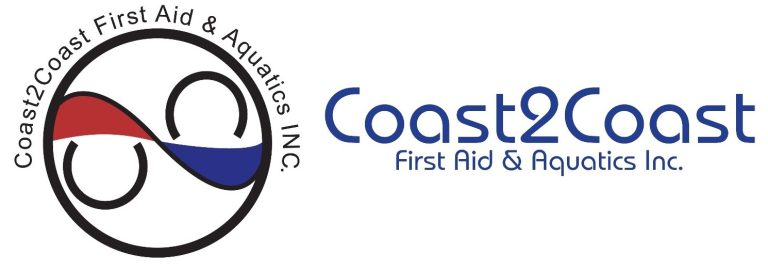We all have seen plenty of movies with the main character involved in an accident and saving lives using CPR, but have you ever wondered if CPR in the movies is anything like the real deal?
In today’s blog post, we invite you to join us on a journey to uncover the truth behind CPR’s portrayal on the big screen and discover what it truly takes to save a life in the real world.
CPR Recap
Cardiopulmonary resuscitation is a skill used when a person is in cardiac arrest. It is an emergency procedure that helps to sustain blood circulation and oxygen supply to the vital organs of the person experiencing a medical emergency. First aiders complete specific CPR steps to assist the individual in need. It generally involves chest compressions and rescue breaths to manually circulate blood and deliver oxygen to the body’s tissues.
CPR can be a crucial intervention in an emergency because it can significantly improve the chances of survival for someone experiencing a life-threatening condition. Timely initiation of CPR helps maintain vital functions until advanced medical care, such as an AED (automated external defibrillator) or other medical interventions, is provided.
Although CPR is a valuable life-saving skill, it is essential to note that adequately trained and certified individuals should perform it. CPR training provides the necessary knowledge and skills to perform CPR correctly and effectively, ensuring the best possible outcome for those who need assistance.
Oops! CPR Mishaps: Behind the Laughter
Ever wondered how CPR instructors handle those ‘uh-oh’ moments? Join us for a hilarious peek behind the scenes as we showcase the epic reactions when CPR doesn’t quite go as planned. From unexpected chest compressions to hilarious missteps, this Youtube Short will have you laughing and learning about the lighter side of life-saving techniques. Watch as our instructors navigate the unexpected with humor and grace, proving that even in moments of mishap, every attempt at CPR is a step towards readiness.
CPR in Movies
In movies, CPR often takes on sensationalist and unrealistic forms that deviate from the actual life-saving technique. As a matter of fact, Hollywood depictions of CPR tend to convey a distorted image that can add drama and mislead the viewer.
On the one hand, movies usually show CPR as a quick and effortless procedure, where a few chest compressions and a single breath magically revive the unconscious victim. In real life, CPR is more physically demanding for the lifesaver and can even be exhausting. Cardiopulmonary resuscitation requires consistent and vigorous chest compressions to maintain blood circulation, followed by rescue breaths to keep the patient’s lungs oxygenated.
In the movie Jumanji: Welcome to the Jungle, there is a scene where Alex (Nick Jonas) is unresponsive on the floor, and Bethany (Jack Black) runs to the rescue. He starts performing CPR, but the technique has a lot of errors. In the first place, he gives 3 chest compressions and then mouth-to-mouth, where the correct procedure requires doing 30 chest compressions and then 2 rescue breaths. In the second place, the chest compressions on the scene are like small pushes; the proper compressions should be 5 cm in depth in adults. Finally, the rescue breaths on the scene are given repeatedly after 3 compressions, whereas the right way to go is a set of 30 compressions, then 2 rescue breaths before doing one more round of compressions.
Save Lives with CPR Training at Coast2Coast!
Join our hands-on CPR training course and gain the skills to make a real difference in emergencies. Whether you’re a beginner or looking to refresh your knowledge, our expert instructors will guide you through essential techniques.
On the other hand, in movies, the protagonist excels in resuscitating the victim with CPR after a prolonged period of unconsciousness. According to the Canadian Red Cross comprehensive guide for first aid, for each minute CPR and use of AED are delayed, the person’s chance of survival is reduced by about 10%. Moreover, biological death occurs when the brain becomes irreversibly damaged after 8 to 10 minutes without oxygen. Overall, movies tend to exaggerate the likelihood of success, falsely implying that CPR is a guaranteed solution regardless of the circumstances.
Another example is the following scene from Spider-man 3, where Peter (Toby Maguire) finds his friend Harry (James Franco) apparently not breathing and unconscious on the floor. If we analyze the scene as first aiders, it is full of mistakes. Firstly, Peter rips off Harry’s shirt to give compressions. In real life, removing clothing to give compressions is unnecessary unless you need to use an AED. Secondly, when Peter realizes that his friend is not breathing, he starts with compressions, but he forgets to give rescue breaths (not to mention that he didn’t even count the compressions). Finally, after giving a few compressions, Peter gives up and starts looking for help. When he realizes no one is around, he carries his friend to the nearest hospital. Remember when we mentioned that for each minute that CPR and the use of AED are delayed, the patient’s chance of survival is reduced by 10%? In this case, carrying a person to a hospital takes a lot of time, and every second without oxygen getting to the brain, it is a step closer to severe brain damage or even death.
Additionally, movies often depict people waking up quickly and fully recovering after CPR. In practice, CPR aims to keep the patient alive until professional medical help arrives. It does not guarantee a complete recovery, but it is a crucial procedure to buy time until advanced medical care is provided.
Misconceptions
The audience may be confused or have a distorted understanding of the procedure because CPR is not always as on the silver screen. Here are some common misunderstandings of CPR:
- Instant revival: In movies, CPR is often portrayed as a miraculous technique for instant resuscitation. In practice, CPR helps to buy some time and sustain blood flow and oxygen supply until advanced medical assistance arrives.
- Single-handed compressions: Movies often portray characters performing chest compressions with one hand, effortlessly resuscitating victims. However, to properly CPR someone unconscious, you must use both hands, interlock your fingers, and apply enough pressure to the chest to ensure adequate blood flow.
- Limited rescue breaths: Usually, films depict characters taking one or more breaths during resuscitation. In fact, breathing is critical to oxygenating the victim’s lungs and should be done in cycles of chest compressions, typically 30 compressions to 2 rescue breaths.
- Depth of chest compressions: In most cases, the actor performing CPR doesn’t actually compress the chest as it should be done; this could be because they are using a real human in the shot and don’t want to injure them.
- High success rates: CPR is portrayed as successful most of the time in movies, creating unrealistic expectations of its effectiveness. In fact, success rates vary depending on factors such as the underlying cause of cardiac arrest, reaction time and the person’s overall health. People might be astonished, but some studies show that CPR’s success rate is low as 14%.
- No need for defibrillation: Movies often overlook the role of defibrillation, a critical aspect of responding to cardiac arrest. Defibrillation, performed using an automated external defibrillator (AED), delivers electrical shocks to the heart to restore its normal rhythm. In most cases, movies do not show or emphasize the importance of early defibrillation, which, together with CPR, can significantly increase the chances of survival.
It is essential to be aware of these misconceptions and understand that real-world CPR situations differ significantly from theatrical depictions. Attending appropriate CPR training will help you respond effectively to emergencies.
Register for CPR and First Aid Training
CPR in Reality
Performing CPR correctly requires training to maximize its effectiveness. Our CPR courses are taught by experienced instructors, and using top-notch equipment will allow you to experience real-world scenarios to be always ready to save lives and be a hero in emergencies.
Here is a quick breakdown of the recommended steps before starting CPR in emergencies:
- Assess the scene and ensure safety: Usually, CPR situations require you to act fast, but as a first aider, you need to evaluate the surroundings to ensure your safety and the safety of the victim. Before initiating CPR, clear out the potential risks and, if necessary, move the person to a safe location.
- Check for responsiveness: As a bystander, you should be aware of the good samaritan laws and the need for consent. Hence, you should tap the individual’s shoulder and ask them if they are okay to assess their level of consciousness. If the person is unresponsive, you should have a clear way to proceed with CPR if needed.
- Call for help: As mentioned before, CPR is a life-saving technique that buys the patient time until further assistance arrives. You should always call 911! If you are alone, provide CPR for about two minutes before leaving the person to call for help.
- Open the airway: Understanding the ABCs while helping a person in an emergency is imperative. With the appropriate precautions, tilt the individual’s head backwards and lift the chin with the other hand. This maneuver opens the airway and improves ventilation.
- Check for breathing: Look for signs of normal breathing. You can put your cheek on the chest and check if the person is breathing. If the victim is gasping or not breathing, it indicates that you should start CPR.
CPR Training and Certification with Coast2Coast
As different from the movies, in the real world, performing CPR incorrectly can have potential consequences and may reduce the effectiveness of the life-saving technique. Suppose someone that is not trained to perform CPR attempts to help a victim. In that case, it can cause inadequate blood circulation, insufficient ventilation and injuries to the victim, not to mention that they will definitely decrease the chances of survival.
Proper CPR training and certification will mitigate these risks and prepare you for real-world emergencies. At Coast2Coast, our experienced instructors are ready to teach you insights into CPR techniques and show you how it should be done in realistic scenarios. We offer different levels of CPR training, depending if you want to help infants and children or apply CPR to anyone, regardless of age.
With CPR training and certification, you can make your home, work and community safer by helping people in heart emergencies. Your skills and knowledge will allow you to follow the correct procedures without hesitation, increasing the chances of a victim’s recovery.





















